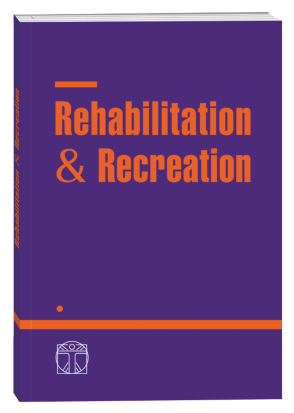ОСОБЛИВОСТІ СКЛАДАННЯ ІНДИВІДУАЛЬНОЇ ПРОГРАМИ ФІЗИЧНОЇ ТЕРАПІЇ ПРИ СИМПТОМАТИЧНІЙ ЕПІЛЕПСІЇ У ДІТЕЙ
DOI:
https://doi.org/10.32782/2522-1795.2022.11.2Słowa kluczowe:
епілепсія, індивідуальна програма, діти, епілептичні синдромиAbstrakt
У даній роботі розглянуто головні чинники виникнення епілепсій у дітей, класифікацію епілепсії за МКХ 10, що характерно для симптоматичної епілепсії, які симптоми та прояви. Мета дослідження. Теоретично обґрунтувати вплив та особливості застосування кінезіотерапії, сенсорної терапії в комплексній програмі фізичної терапії при симптоматичній епілепсії у дітей. Матеріал і методи дослідження: теоретичний аналіз спеціальної медичної літератури, інформаційних джерел та узагальнення даних, клініко-інструментальні методи дослідження (анамнез, обстеження). Епілепсія – розлад мозкової діяльності, для епілепсії характерною є стійка схильність до виникнення епілептичних нападів, та когнітивних, психологічних, соціальних, функціональних порушень внаслідок виникнення стійких епілептичних нападів. Згідно МКХ-10 – епілепсія (G40) класифікується на локалізовану – фокальну, парціальну, ідіопатичну епілепсію, епілептичні синдроми з нападами з фокальним початком (G40); локалізовану – фокальну, парціальну, симптоматичну епілепсію, епілептичні синдроми з простими парціальними нападами (G40.1); локалізовану – фокальну, парціальну, епілептичними синдромами з комплексними парціальними нападами (G40.2); генералізовану ідіопатичну епілепсію і епілептичні синдроми (G40.3); особливі епілептичні синдроми (G40.5); малі неуточнені напади (G40.6); епілепсія неуточнена (G40.9); когінетивні та мнестичні розлади внаслідок епілепсії (F02.803); психічні розлади внаслідок дисфункції та ураження головного мозку (F05.12) [4]. Симптоматична епілепсія причина якої відома, залежить від генетичних факторів, причиною є вторинна від встановлених захворювань.
Bibliografia
Хобзей М. К, Міщенко Т. С. Епілепсії у дітей. Уніфікований клінічний протокол первинної медичної допомоги. Наказ Міністерства охорони здоров’я України 17.04.2014 № 276. Київ, 2014.
Bovend’Eerdt T. J. Написання SMART-реабілітації цілі та досягнення досягнення мети масштабування: практичний путівник / Т. Дж. Бовенд’ерт, Р. Е. Ботелл, Д. Т. Уейд // Клін. Реабілітація. – 2009. – 23. – Р. 352–361.
Мартинюк В. Ю., Коноплянко Т. В., Свистільник В. О. та ін. (2012) Лікування епілепсії, епілептичних синдромів у дітей. Метод. рекомендації. Київ, 18 с.
МОЗ України (2014) Уніфікований клінічний протокол первинної, екстреної вторинної (спеціалізованої) та третинної (високоспеціалізованої) медичної допомоги «Епілепсії у дітей». Наказ МОЗ України від 17.04.2014 р. № 276 «Про затвердження та впровадження медико-технологічних документів зі стандартизації медичної допомоги при епілепсіях».
Pobrania
Opublikowane
Jak cytować
Numer
Dział
Licencja

Utwór dostępny jest na licencji Creative Commons Uznanie autorstwa – Użycie niekomercyjne – Bez utworów zależnych 4.0 Międzynarodowe.












